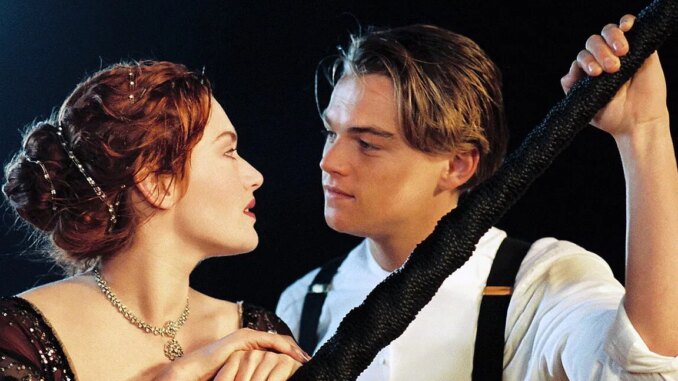
The cinematic "sex scene" is a curious beast. It's a lightning rod for controversy, a shorthand for artistic daring, and often, the most memorable — or infamously awkward — moment in a film. Lists purporting to rank the "10 Best S*x Scenes of All Time" are therefore inherently provocative, designed to spark debate, and frequently, to upend cherished notions. Among the many surprising exclusions or low rankings these lists often reveal, one particular omission stands out: the iconic, steamy encounter between Rose (Kate Winslet) and Jack (Leonardo DiCaprio) in James Cameron's Titanic, routinely finding itself outside the top five, if it makes the cut at all. To understand why this universally beloved, passionately charged moment might be overlooked by serious cinephiles evaluating true cinematic intimacy, we must first dissect what makes a screen coupling truly transcendent, and then contrast it with the beautiful but ultimately more innocent embrace aboard the doomed ship.
The Titanic scene is, without question, iconic. It's the culmination of a forbidden, whirlwind romance, a moment of burgeoning passion framed by the grandeur and impending tragedy of the ship itself. As Jack’s hand glides against the fogged glass, the camera lingering on Rose’s face, a torrent of unspoken desire, vulnerability, and first-time exhilaration pours forth. It’s a scene about yearning, about breaking free from societal chains, about the fragile beauty of youth finding solace and connection in a world teetering on the brink. Its power lies in its implication, its romantic idealization, and the immense emotional stakes surrounding it. It’s less about the explicit act of sex and more about the idea of it — the profound intimacy of two souls irrevocably drawn together. For a generation, it defined cinematic romance.
However, the "best" sex scenes, according to critical consensus and artistic merit, often venture far beyond this idealized, almost chaste, romanticism. They are scenes that are unflinching, honest, and often, uncomfortable. They push boundaries not just for shock value, but to reveal deep truths about character, relationships, power dynamics, or societal taboos. They serve as narrative engines, psychological excavations, or moments of profound, sometimes disturbing, vulnerability. They are scenes that linger because they challenge, provoke, or utterly transform our understanding of the characters involved.
Consider, for instance, the raw, almost violent sensuality of the kitchen counter scene in David Cronenberg's A History of Violence. Here, Tom (Viggo Mortensen) and Edie (Maria Bello), a married couple grappling with the revelation of Tom's dark past, engage in a desperate, almost primal coupling. It's not romantic; it's a frantic negotiation of trust, fear, and desire, stripped bare of all pretense. The physicality is intense, reflecting the internal turmoil of their relationship and the violent truths that have shattered their idyllic life. It’s an honest, unsettling, and incredibly powerful portrayal of sex as a battleground and a desperate attempt at reconnection, far removed from the steamy, almost ethereal quality of Titanic.
Another powerful contender often cited for its profound impact is the opening lovemaking scene in Nicolas Roeg's Don't Look Now. It’s fragmented, intercut with domesticity, showing sex as an integral, if sometimes mundane, part of a long-standing marriage. But then, as the scene progresses, it’s intercut with shots of their daughter playing, hinting at her tragic drowning. This isn't just a physical act; it's a tender, intimate moment steeped in the subconscious dread of impending loss, making the act itself achingly vulnerable and profoundly human. It’s an illustration of how sex can be deeply intertwined with the broader tapestry of life, love, and grief, giving it a weight and complexity that transcends mere passion.
Then there are scenes that break ground culturally, forcing audiences to confront uncomfortable truths. The tender, yet profoundly tragic, intimate moments between Ennis (Heath Ledger) and Jack (Jake Gyllenhaal) in Brokeback Mountain are not just about physical desire, but about forbidden love, societal repression, and the enduring ache of a life denied. These scenes are infused with a desperate tenderness and a heartbreaking authenticity, making them transcendent not just as representations of gay intimacy, but as universal expressions of human longing against an unforgiving world. They challenge perceptions and evoke deep empathy, cementing their place as truly great cinematic moments.
The Titanic scene, for all its beauty and emotional resonance, ultimately offers a more sanitized, idealized vision of intimacy. It’s the breathless anticipation, the emotional climax, rather than the messy, complex, and often uncomfortable reality that many "best" scenes bravely portray. While it captures the exquisite vulnerability of first love, it doesn't delve into the darker, more ambiguous, or brutally honest facets of human desire, power, or psychological struggle that other films dare to explore.
In conclusion, while Winslet and DiCaprio’s electrifying connection on the Titanic remains a landmark in romantic cinema, its omission from the top tier of "best sex scenes" lists is understandable. These lists prioritize scenes that push the envelope, that reveal character in profound ways, that challenge societal norms, or that use intimacy as a powerful narrative and psychological tool. The Titanic scene, while unforgettable, is a beautiful fantasy; the truly great cinematic sex scenes are often closer to a raw, unflinching truth, echoing the complex, messy, and infinitely fascinating depths of the human condition. They don't just show sex; they show the soul, laid bare.
